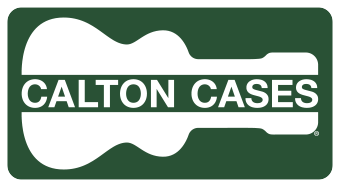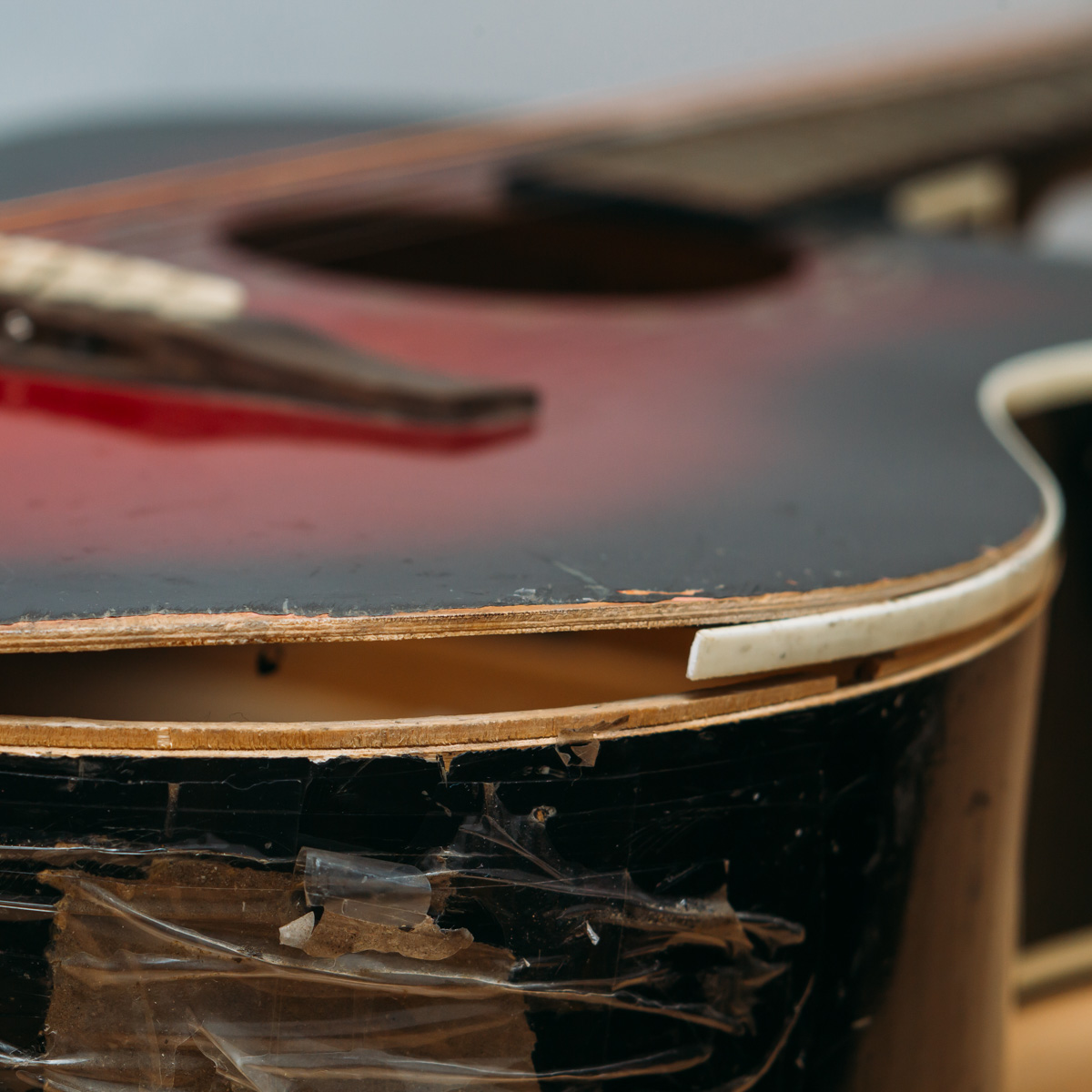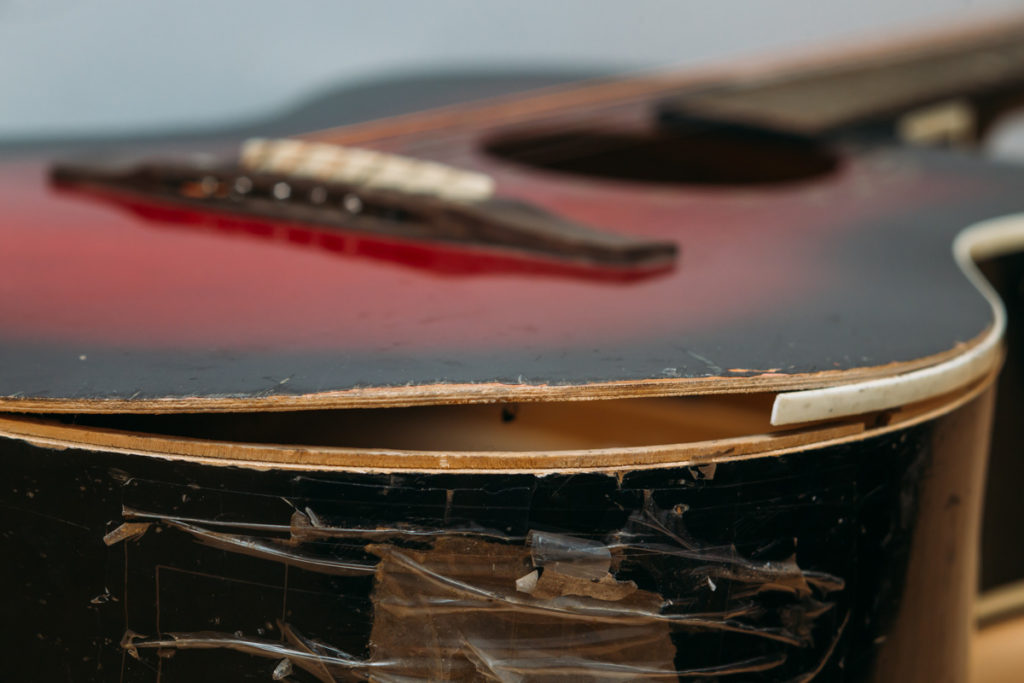
It’s a dangerous life to be a guitar. Whether you’re riding cross-country on a grueling show schedule or shredding in 12 hour studio sessions, keeping up in the guitar hustle can be a taxing experience. Even more disturbing, sometimes the most hard-to-see dangers can be the most detrimental. Humidity and temperature (collectively ‘climate’) are a force for destruction that plague guitar longevity and quality throughout the lifetime of your instrument. After all, it is wood, and just like the trees from which it derives, the temperature and moisture in the air affect everything from your guitar’s density to its shape. Rapid climate change can create lasting damage such as warping of its construction, distortion of its fretboard, playability, and ultimately result in the degradation of its sound. Often, glue and joints will loosen and separate due to the wood subtly changing in size. Meanwhile, beyond technical elements, sudden temperature changes and humidity can also often result in cracks to your guitar’s finish. Finally, it can end up in the oxidizing of your strings, the cost of which can add up over time. The bottom line is: guitars are an heirloom that every musician would like to see last and climate is the silent threat to that goal. So how do you prevent humidity and temperature damage to my instrument? Let’s talk today about comprehensive and reliable climate management of your instrument.
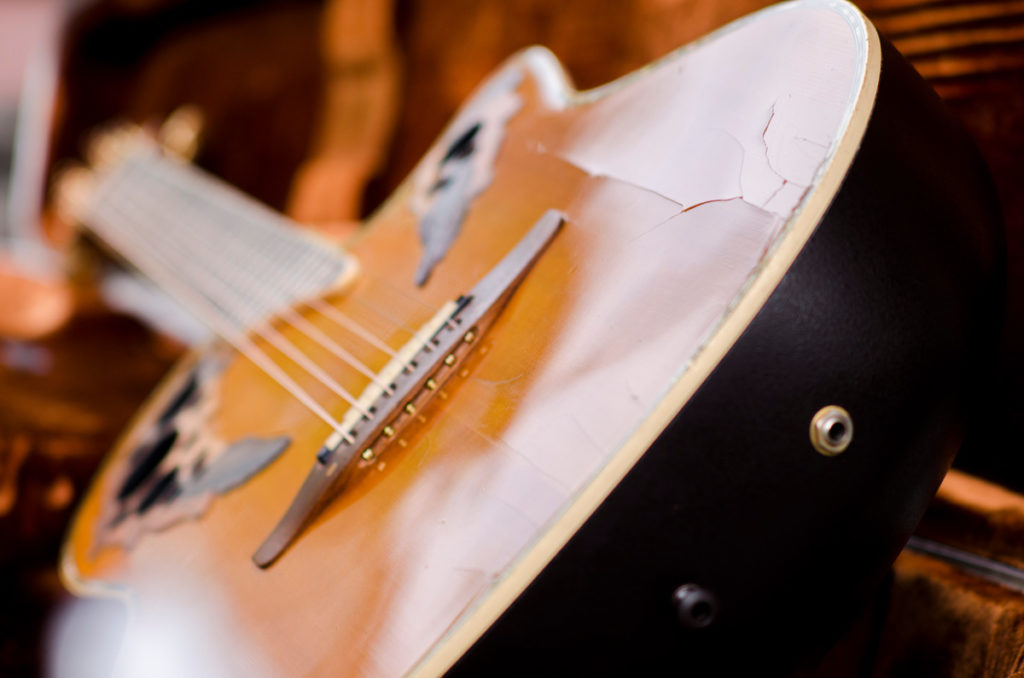
Typical Environments That Cause Damaging Temperature Change
Your guitar is a fickle roommate; it loves a humidity range between 45-55% and a temperature set between 65-75 °F (18-24 °C). Put simply, your guitar likes temperatures and ranges that you do- nothing more, nothing less. But as you would only experience discomfort, your guitar would suffer damage and degradation. For that, it’s important to keep in mind the more hazardous environments your guitar might experience. Obviously, anywhere in your home that is not insulated is basically the equivalent of leaving it outside, so don’t leave it in your basement or attic. Similarly when you’re on the road, don’t travel with your guitar in the trunk or on top of the car without adequate protection. Avoid playing outside or in the garage on those hot summer days if you can help it. And if you have to, try your best to limit extended exposure to the heat or sun. In the end, as with all things in life, treat it the way you’d like to be treated.

Humidity and Temperature Damage Prevention
As many dangers as there are out there, there are also preventative measures:
- When you’re on the road, travel with it as if it were a passenger, not in the trunk.
- When you’re at home, leave it in a dedicated, temperature controlled room.
- Limit the time your guitar is outside and give it breaks.
For Humidity:
- Consider storing with a humidifier, such as D’addario Humidifier packs (Featured here) These packs are simple to use and only require that you leave a packet in your storage case with your instrument while it’s not used.
- You can go a step further by monitoring the health of your guitar with a hygrometer. Items such as the Oasis OH-2C Digital Hygrometer will clip directly onto the neck of your guitar and provide you with a digital readout of its temperature at all times.
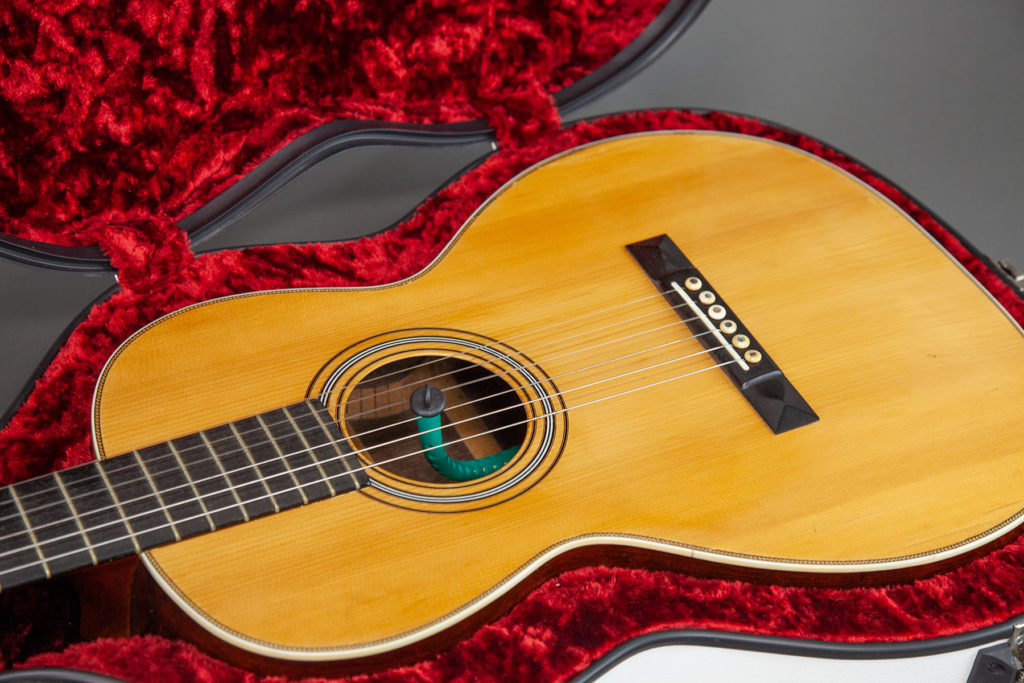
Finally, there are essential differences in the specific maintenance of different guitar body types. Particularly regarding solid body versus semi-hollow and hollow body guitars. Hollow body guitars cannot expand outward in size, so expansion can force a concave or convex bowing of the soundboard or belly. Even though this will eventually resettle, it will never return to the original dimensions and will often separate glues and adhesives. Meanwhile, solid body guitars are less likely to warp, but often have thinner, more sensitive necks and fretboards, as well as hardware and wiring to maintain. In either case, climate shock may differ from model to model, but prevention comes from being conscious of the climate your guitar is in.
Finally, for truly reliable climate management, store your instrument in a quality guitar case, such as one from our exceptional line at Calton Cases; quality custom cases since 1969.
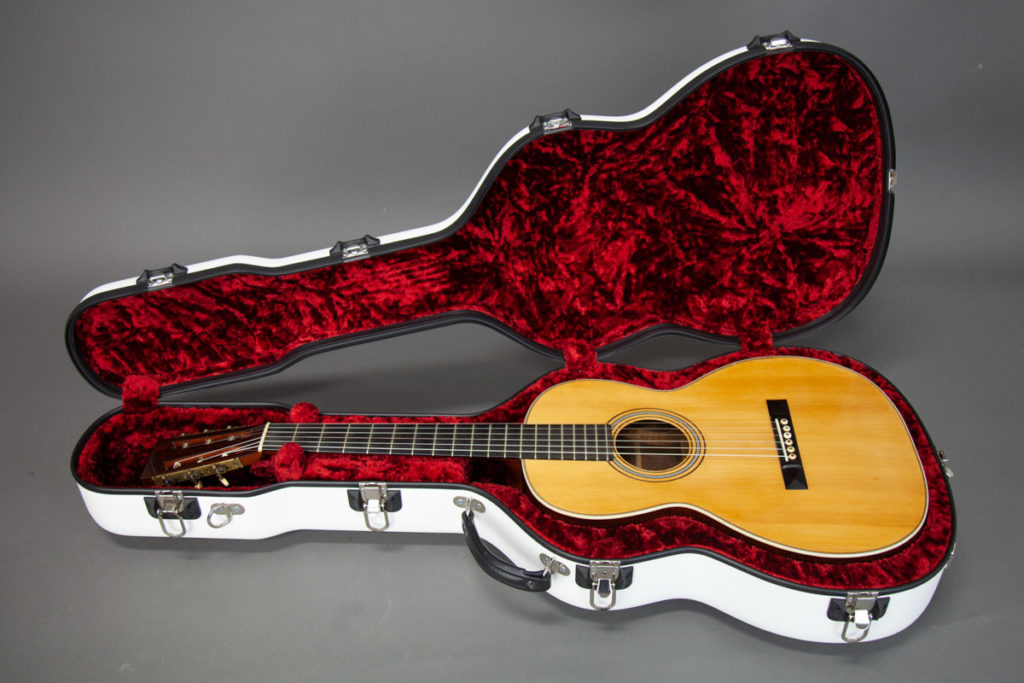
How A Calton Case Prevents Humidity Expansion and Contraction
Shameless plugs aside, Calton Cases are, in fact, one of, if not the most consistent and reliable method of guitar protection against temperature and humidity available today. The deep, tongue and groove seal, combined with the insulated interior provide unmatched atmospheric retention of your case’s internal temperature and humidity. Every Calton Case boasts a controlled and gradual acclimation of the case’s internal conditions to the external temperature and humidity, so that when your case moves into contrasting temperature extremes, any climate shock is drastically minimized. This is due to our unique process of high quality, custom-fitted, flexible urethane foam. As a part of our design process, we use additional foam to properly insulate the case from damage as well as temperature. Finally, our high density fiberglass composite shell provides the ultimate barrier to accidental impact. Preventing a break, ding, crack, or scratch from occurring is the best way to protect your instrument’s finish or seal, which does a lot of the work in slowing the damage from fluctuating environmental conditions. Put simply, Calton Cases are the Goldilocks standard of case climate management: not too hot, not too cold, but just right every time.
Temperature Shock Testing
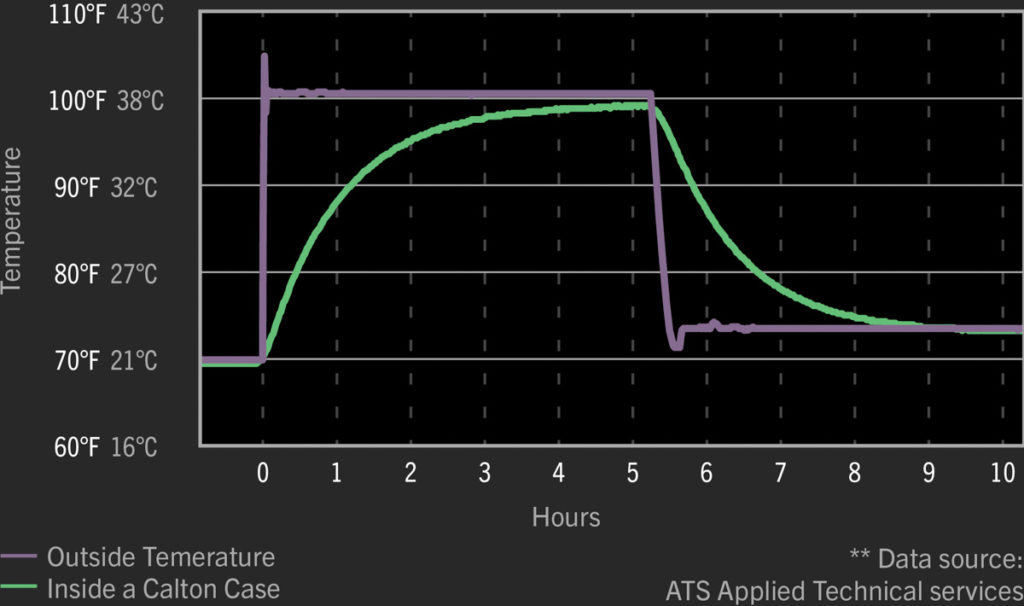
Humidity Regulation Testing
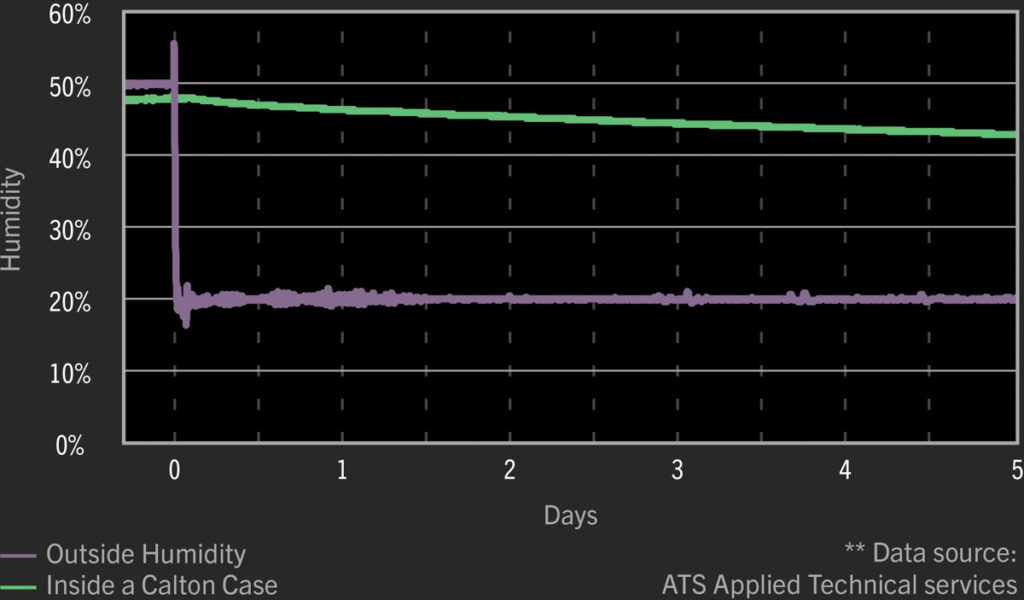
Conclusion
Climate is a silent killer for guitars and instruments across the spectrum. putting your guitar through thick and thin (air) is not the way to ensure it lasts for years to come. For that, staying conscious of humidity, temperature, and your guitar’s overall climate is the most effective way to ensure you and your guitar’s musical journey goes the distance. And a humidity-controlled, temperature-shock regulating Calton Case is the best vessel for that ride.

